Planting and caring for aeschinanthus "Mona Lisa"
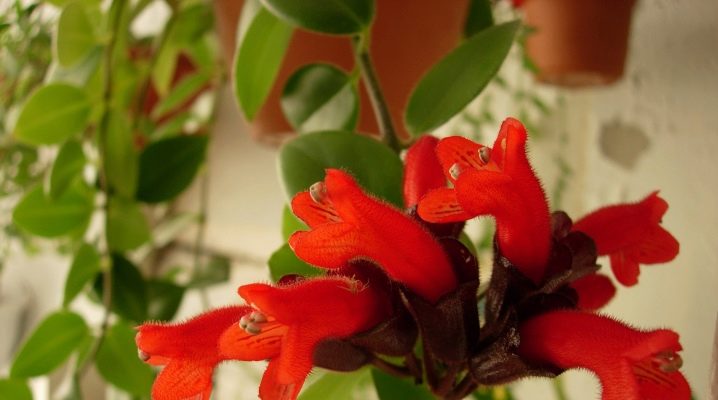
Eschinanthus, which is a rather exotic evergreen flowering plant in our area, belongs to the Gesneriev family. Translated from Greek into Russian, its name means "distorted flower", and the people also call it "fondant flower". Both options clearly reflect the unusual shape and rich color of the buds. It will become a true decoration of any room and site, but you need to have an idea of the rules for planting and caring for the escinanthus in general and its variety "Mona Lisa".
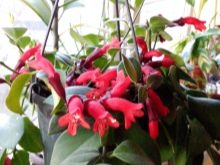
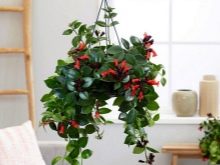
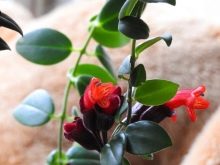
Description of the flower
To understand the rules and potential difficulties associated with the cultivation of the escinanthus "Mona Lisa", you should pay attention to its key features. In its natural habitat, this flower prefers to be located on tree trunks. It is noteworthy that it does not encroach on other people's nutrients, that is, in essence it is an epiphyte. The length of the stems, on which a large number of dense oval-shaped leaf plates with short petioles are located, reaches from 0.3 to 0.9 meters. The flowers are pollinated by birds of the Nektarnitsev family.
The main difficulties associated with growing this tropicana at home are due to its contradictory nature. An example is the risk of damage from direct sunlight. The uniqueness of the situation is due to the light-loving nature of Aeschinanthus. The flower prefers humid air, but at the same time, the likelihood of developing diseases is high when it is in a cool room. On the other hand, high temperatures during the wintering period often lead to the cessation of flowering.
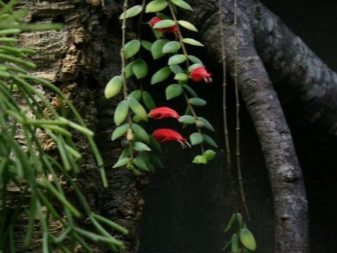

"Mona Lisa" differs from most of its "brothers" in ease of cultivation.
This type of Aeschinanthus is not so whimsical in terms of care. One of its main distinguishing features is the presence of a clear central vein on the leaves. At the same time, on the upper parts of the shoots of the plant, inflorescences are formed in the form of bright red flowers closely spaced to each other.
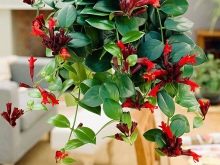
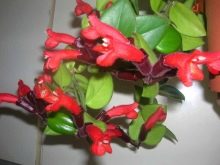

Planting and leaving
With the right approach, Aeschinanthus will fully thank the caring florist for the attention shown to his capricious person. To create an enabling environment, the following important points should be considered.
- The correct choice of place for the pot. It is worth considering that this flower loves diffused light and reacts negatively to direct ultraviolet rays. Experienced growers try to place the plant near the western or, conversely, eastern windows. And you should also remember about the negative effects of drafts.
- The soil for planting is chosen enriched and necessarily loose. A ready-made substrate or a self-prepared mixture is used, which includes leaf compost, humus, as well as peat and sand.
- In the spring, during the activation of the growing season, the optimum temperature will be 23-24 degrees. In winter, this figure drops to 17-18 degrees.
- The soil should be moistened as its top layer dries. In the winter months, weekly irrigation is sufficient for the plant. And in the summer, spraying the flower several times in 7 days will be a mandatory event.
- Top dressing in the form of complex fertilizers or organic matter is applied in spring and summer.
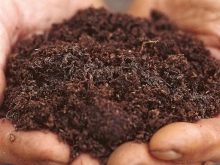
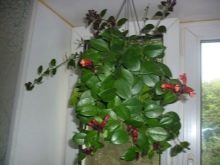

In addition to all of the above, do not forget about the annual Aeschinanthus transplant. The most favorable time for the implementation of such events is the spring period, after the end of flowering.To transplant, you will need a pot a few centimeters larger than the one used.
Move the plant with the earthen ball to minimize the risk of root injury. The final step will be to pinch the stems.
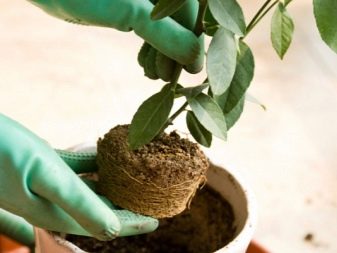
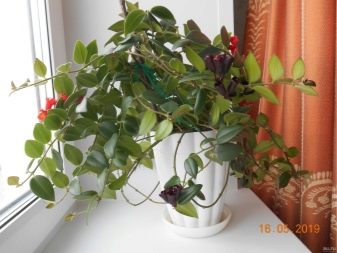
Reproduction
As practice shows, in the period from 3 to 5 years of life, Aeschinanthus noticeably loses its decorative properties. Given this feature, it has to be updated periodically. And in this case, we are talking about planting young animals instead of an old flower. The plant can be propagated by cuttings or seeds. The first option is the most popular among modern florists.
Aeschinanthus can be propagated by leafy or stem cuttings. The last experienced growers get it as a result of cutting off the tops of the stems, on which there are 5-6 nodes. On average, the length of such segments is 10 cm.
It is important that the pruning is done before the plant begins to bloom, or after flowering is complete.
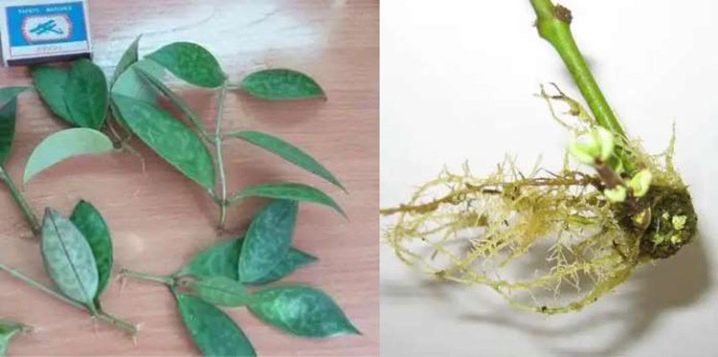
The resulting cuttings will need to be freed from the leaves and placed in water. And you can also root the future planting material in the soil mixture. The cuttings must be covered with foil or placed in a mini-greenhouse. It is worth considering that the recommended temperature is 25 degrees. Under favorable conditions, the roots will appear in about 15-20 days.
The second method involves trimming leaf plates with buds. The resulting leaf cuttings are processed, planted in a substrate, and the container is covered with a film. After the roots appear, the material is seated in separate pots, in which there must be a drainage layer. In addition, a layer of sand will need to be poured onto the substrate.
Seed propagation is not popular with flower growers. In this case, the planting material is formed in ripe bolls. Small seeds are shaken out and sown in a container filled with a substrate. The planting is covered with polyethylene, and watering is carried out through the pallet.

Pests and diseases
The solution to the problems associated with growing the described flower is to follow certain simple rules... It is recommended to pay special attention to the fight against diseases and pests.
- Powdery mildewthreatening a plant in cool conditions with high humidity. As an effective remedy, many use ordinary potassium permanganate, and in severe cases, cut off the affected areas and spray with "Topaz".
- Gray rotthat appears during stagnation of moisture and due to low temperatures. It is treated with Fundazol and following the rules of care.
- Chlorosis. It is recommended to treat the plant with Fitoverm.
- Shield. Effective means of fighting the pest are infusion of garlic, and in difficult situations "Aktara".
- Mealybug. Affected specimens are wiped with alcohol or treated with ordinary laundry soap (if the infection is strong, then spraying with "Aktara" is used).
- Spider mite. Treatment with insecticides will be required with the obligatory protection of the soil with a film.
- Aphid. Processing with laundry soap or black pepper extract helps well.
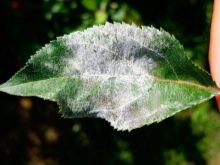
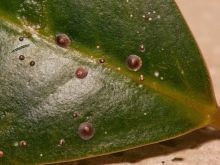
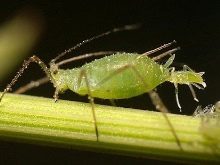
Summing up, it is worth focusing on the fact that escinanthus is a very beautiful and at the same time exotic plant. It requires special conditions of detention, as well as competent care, which implies a certain experience with the grower.































The comment was sent successfully.